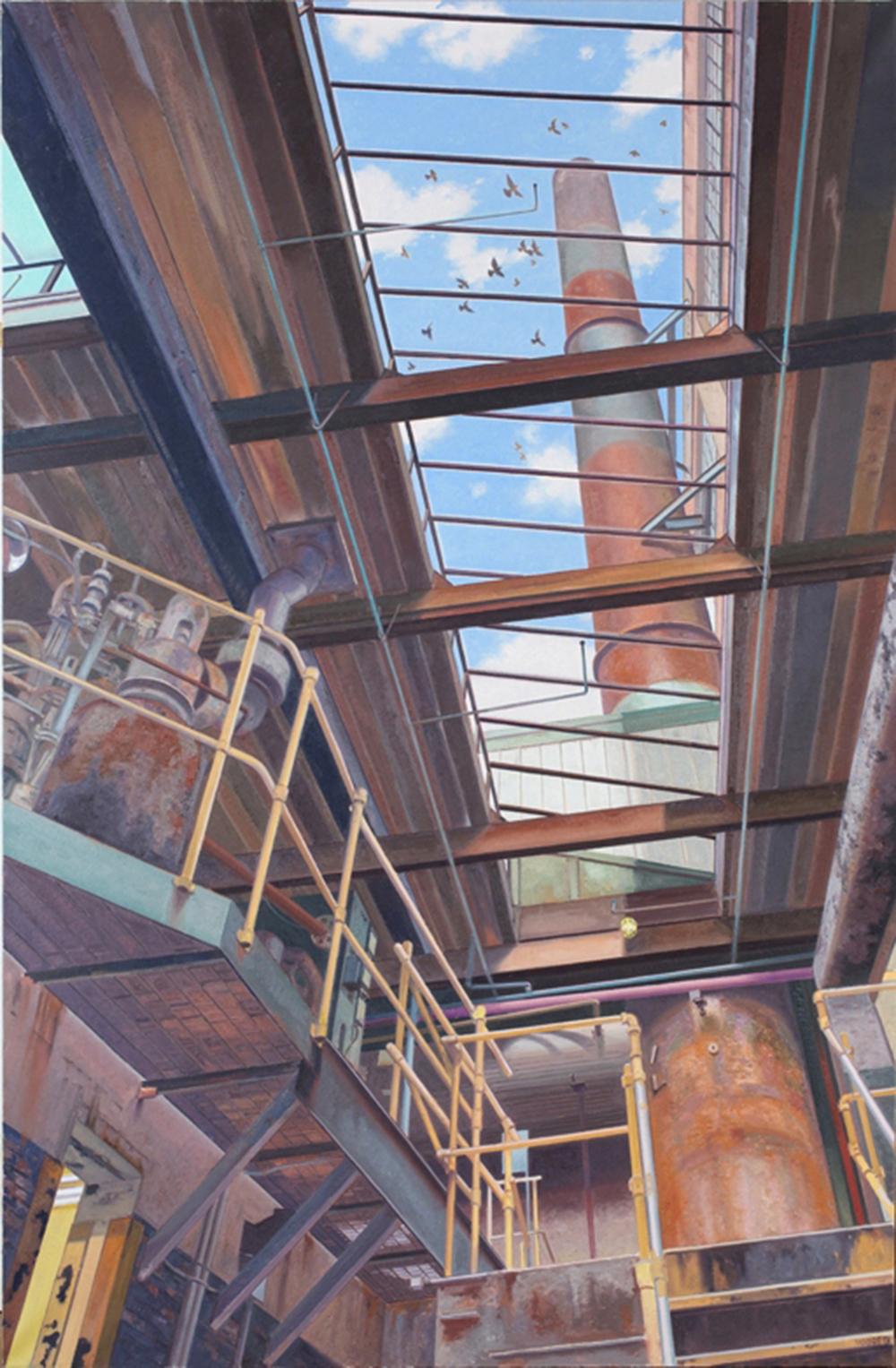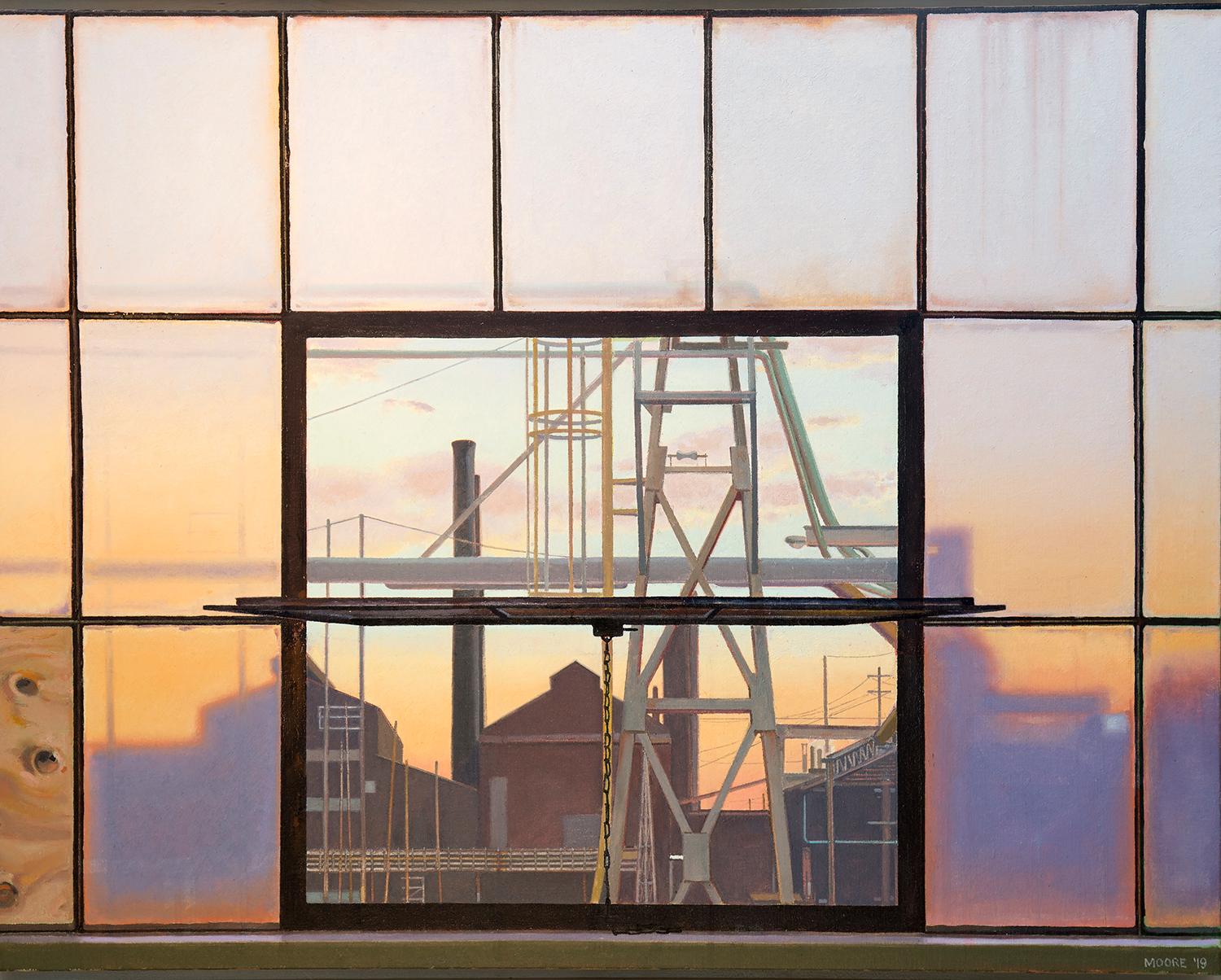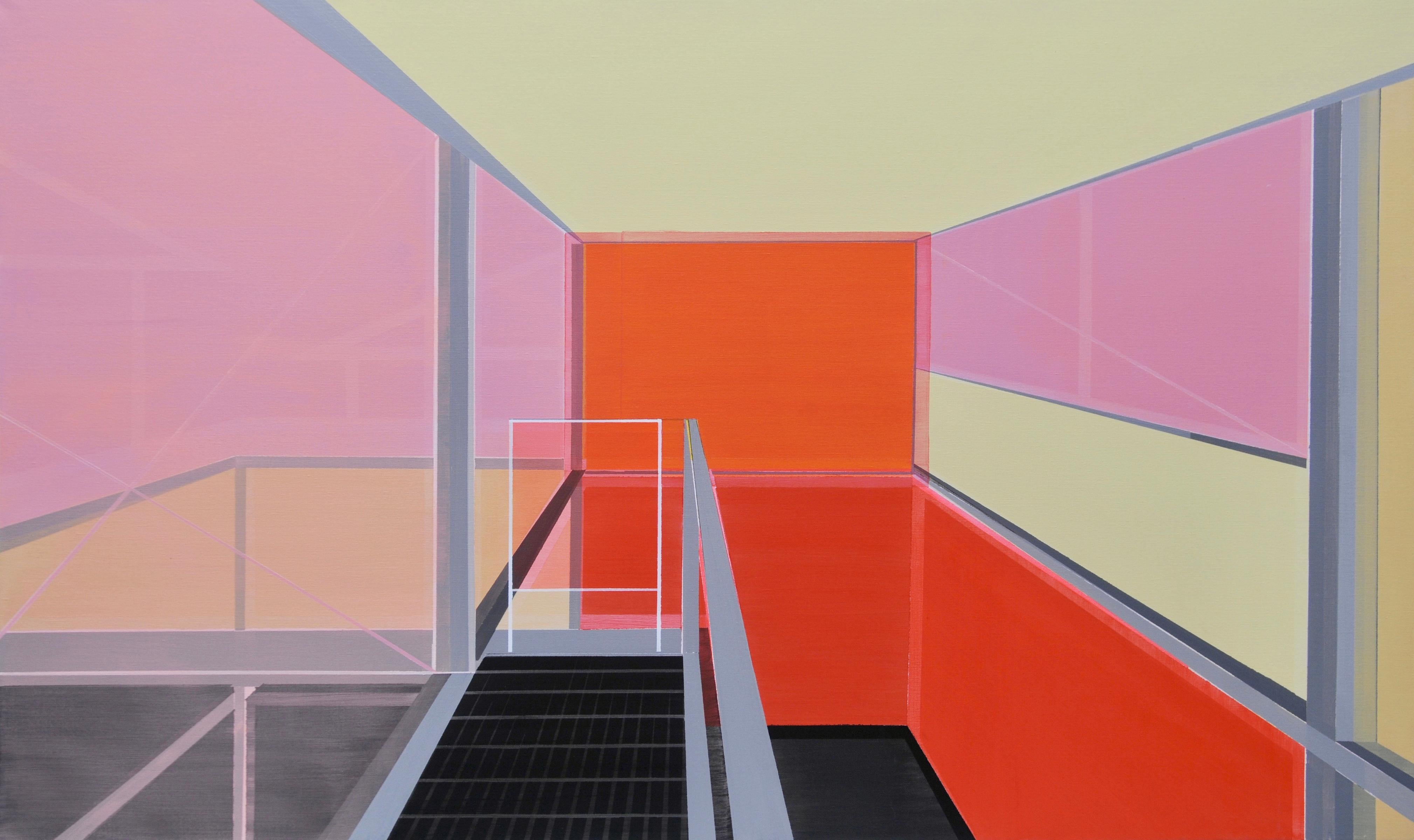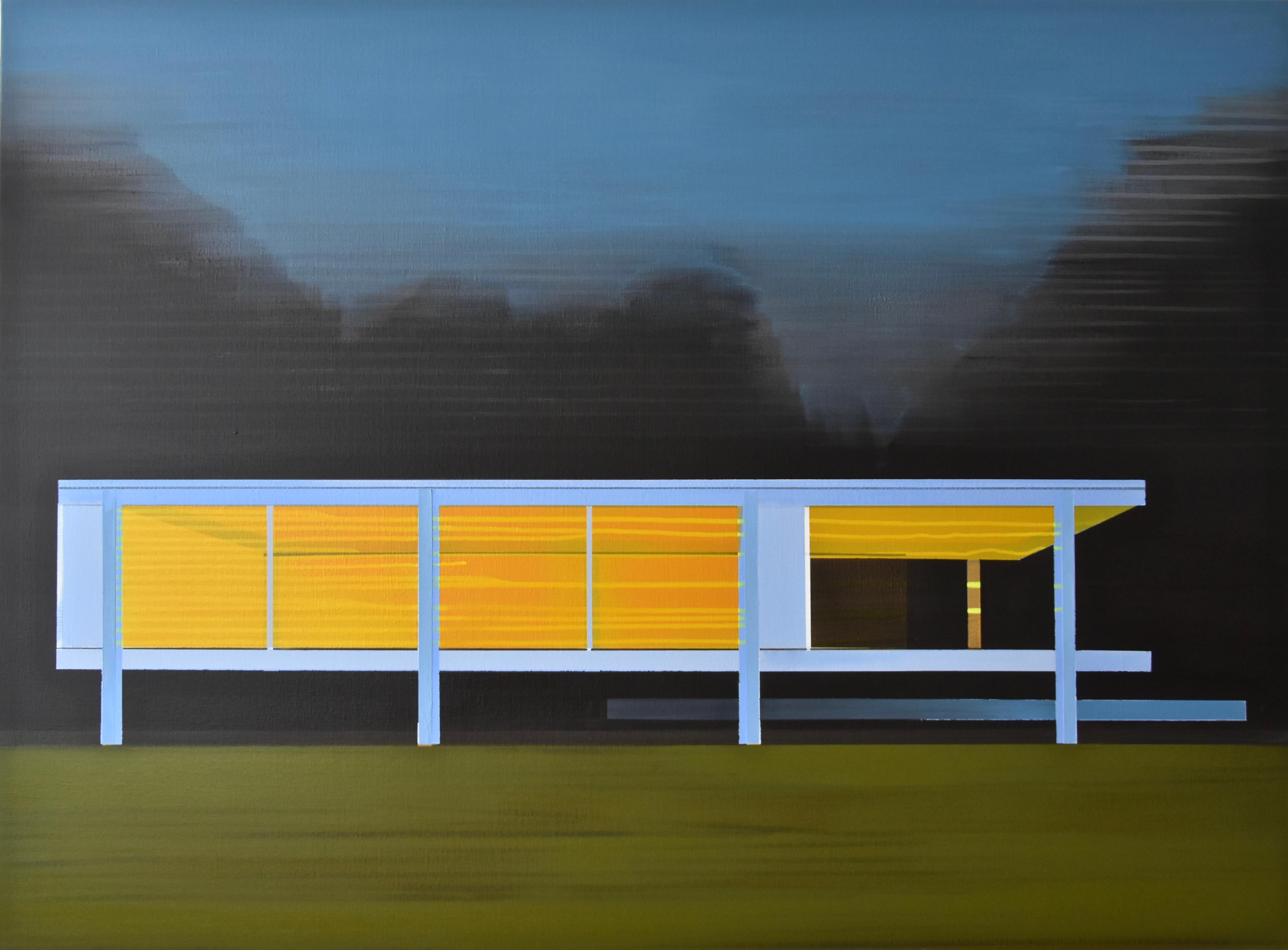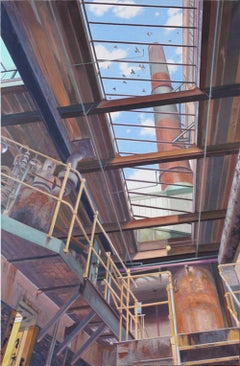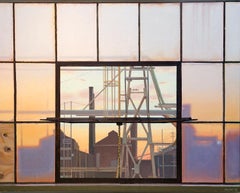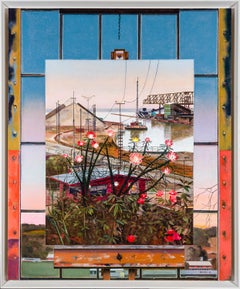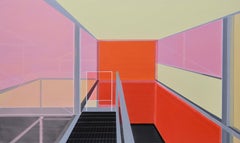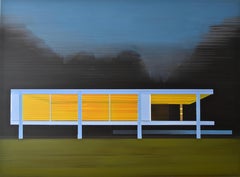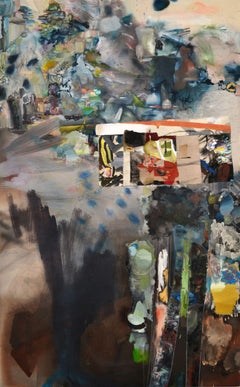Want more images or videos?
Request additional images or videos from the seller
1 of 5
John MooreDye House2012
2012
Price Upon Request
Price Upon Request
Price Upon Request
Price Upon Request
Price Upon Request
Price Upon Request
Price Upon Request
Price Upon Request
Price Upon Request
Price Upon Request
About the Item
Signed and dated (at lower right): MOORE 12
- Creator:John Moore (1941, American)
- Creation Year:2012
- Dimensions:Height: 60 in (152.4 cm)Width: 90 in (228.6 cm)
- Medium:
- Movement & Style:
- Period:
- Condition:
- Gallery Location:New York, NY
- Reference Number:Seller: M 018641stDibs: LU238823202
John Moore
John Moore (born 1941) is a celebrated American artist renowned for his vibrant paintings capturing urban landscapes and architectural scenes. His dynamic artwork, influenced by the energy of New York City, showcases bold colors and expressive brushwork. Moore studied at the Art Students League of New York and the School of Visual Arts, honing his craft and earning recognition for his unique style. His paintings have been exhibited in galleries and museums across the United States, including the prestigious Lincoln Center for the Performing Arts in New York City, highlighting his significance in the contemporary art scene. Moore's contributions to visual arts, particularly his representation of city life, have solidified his place as a prominent figure in American art.
About the Seller
5.0
Recognized Seller
These prestigious sellers are industry leaders and represent the highest echelon for item quality and design.
Established in 1952
1stDibs seller since 2010
35 sales on 1stDibs
Typical response time: 3 hours
Associations
Art Dealers Association of America
- ShippingRetrieving quote...Shipping from: New York, NY
- Return Policy
Authenticity Guarantee
In the unlikely event there’s an issue with an item’s authenticity, contact us within 1 year for a full refund. DetailsMoney-Back Guarantee
If your item is not as described, is damaged in transit, or does not arrive, contact us within 7 days for a full refund. Details24-Hour Cancellation
You have a 24-hour grace period in which to reconsider your purchase, with no questions asked.Vetted Professional Sellers
Our world-class sellers must adhere to strict standards for service and quality, maintaining the integrity of our listings.Price-Match Guarantee
If you find that a seller listed the same item for a lower price elsewhere, we’ll match it.Trusted Global Delivery
Our best-in-class carrier network provides specialized shipping options worldwide, including custom delivery.More From This Seller
View AllClearing
By John Moore
Located in New York, NY
John Moore was born in St. Louis, MO in 1941. He received a BFA from Washington University in St. Louis (1966) and an MFA from Yale University (1968). Over a career spanning forty ye...
Category
2010s Contemporary Interior Paintings
Materials
Canvas, Oil
$115,000
Sixth Hour
By John Moore
Located in New York, NY
Signed and dated (at lower right): MOORE '19
Category
2010s Contemporary Paintings
Materials
Canvas, Oil
$40,000
Distant Voices
By John Moore
Located in New York, NY
John Moore was born in St. Louis, MO in 1941. He received a BFA from Washington University in St. Louis (1966) and an MFA from Yale University (1968). Over a career spanning forty ye...
Category
2010s Contemporary Interior Paintings
Materials
Canvas, Oil
Double Dusk
By John Moore
Located in New York, NY
Signed and dated (at lower right): MOORE '18
Category
2010s Contemporary Landscape Paintings
Materials
Canvas, Oil
$40,000
Untitled
By Randall Exon
Located in New York, NY
Randall Exon (b. 1956) was born in Vermillion, South Dakota. Exon earned his B.F.A. in painting from Washburn University in Topeka, Kansas, and an M.F.A. at the University of Iowa. I...
Category
2010s Contemporary Paintings
Materials
Oil, Board
$10,000
September
By Randall Exon
Located in New York, NY
Oil on panel
Category
2010s Contemporary Landscape Paintings
Materials
Oil, Panel
$18,000
You May Also Like
Indoorspace
Located in New York, NY
Born in Corsica, Cecile van Hanja spent her childhood in France before moving to the Netherlands as a child. Inspired by Piet Mondrian, the De Stijl movement, as well as her newfound...
Category
2010s Contemporary Landscape Paintings
Materials
Canvas, Acrylic
Price Upon Request
Pavilion
Located in New York, NY
Born in Corsica, Cecile van Hanja spent her childhood in France before moving to the Netherlands as a child. Inspired by Piet Mondrian, the De Stijl movement, as well as her newfound...
Category
2010s Contemporary Landscape Paintings
Materials
Canvas, Acrylic
Price Upon Request
The Glass Room
Located in New York, NY
Born in Corsica, Cecile van Hanja spent her childhood in France before moving to the Netherlands as a child. Inspired by Piet Mondrian, the De Stijl movement, as well as her newfound...
Category
2010s Contemporary Landscape Paintings
Materials
Canvas, Acrylic
Price Upon Request
Abridged, Painting, Oil on Canvas
By John Dowling
Located in Yardley, PA
oil, pencil, ink, charcoal, pastel, thread on canvas
Painting :: Contemporary :: This piece comes with an official certificate of authenticity signed by the artist :: Ready to Hang...
Category
2010s Contemporary Paintings
Materials
Oil
Open House
Located in New York, NY
Born in Corsica, Cecile van Hanja spent her childhood in France before moving to the Netherlands as a child. Inspired by Piet Mondrian, the De Stijl movement, as well as her newfound...
Category
2010s Contemporary Landscape Paintings
Materials
Canvas, Acrylic
Price Upon Request
Palais
By Luciana Levinton
Located in New York, NY
Palais, 2016
Oil on canvas
61.80h x 57w in
Born in 1977, Luciana Levinton is a visual artist and architect who lives and works in Buenos Aires. She graduated from the University of ...
Category
2010s Contemporary Interior Paintings
Materials
Canvas, Oil
Read More
With Works Like ‘Yours Truly,’ Arthur Dove Pioneered Abstract Art in America
New York gallery Hirschl & Adler is exhibiting the bold composition by Dove — who’s hailed as the first American abstract painter — at this year’s Winter Show.
Remarkably, Elizabeth Turk’s Sculptures Highlight the Lost Voices of Extinct Birds
In one of the first live and in-person exhibitions at a Manhattan gallery since last spring, the California-based sculptor gives the lost voices of endangered and extinct birds and animals a magnificent embodied form.
More Ways To Browse
Landscape Prints San Francisco
Dior Stamp
Nude Color Photographs
Film Festival
Dior Limited Edition
20th Century Collage
Lithograph 1960s
Rene His
Andy Warhol Signed
Japanese Limited Editions
The Thinker Sculpture
Lithograph Stone
18th Century Artifacts
Antique Laid Paper
Lithograph Travel
Geometric Wood Sculpture
Photographs Ballet
Dior Illustration
